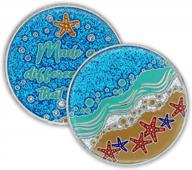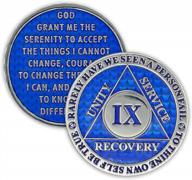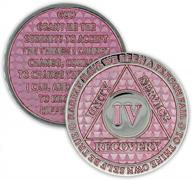Another interesting products
The Struggle of Addiction and the Importance of Support
Addiction is a devastating disease that impacts millions of people worldwide. Whether the addiction is to alcohol, illicit drugs, prescription medications, or behaviors like gambling, the effects can be extremely damaging to one's health, relationships, and livelihood.
Battling an addiction is an incredibly difficult journey that requires tremendous strength and perseverance. There are often painful withdrawals, intense cravings, and cycles of relapse. It can feel like a never-ending struggle to stay clean and sober.
The Role of Support in Recovery
While the addicted individual must find the internal motivation to change, external support is also critical for overcoming addiction. The help of family, friends, support groups, and treatment professionals can make all the difference.
- Family support provides stability, accountability, and assistance in practical matters like housing and childcare.
- Friendships reinforce sobriety by avoiding substances around recovering addicts.
- Support groups like Alcoholics Anonymous connect addicts who can relate to the struggle.
- Treatment professionals equip patients with counseling, behavioral therapies, and sometimes medication assistance for withdrawal symptoms or cravings.
The Role of Sobriety Coins
An important tool in many addiction support communities are sobriety coins, also called recovery chips. These tokens represent milestones in an individual's sober journey.
Coins are given out in programs like Alcoholics Anonymous to mark periods of sobriety, from 24 hours to multiple years. They provide a tangible symbol that recipients can carry with them as a reminder of their commitment and progress in recovery.
| Coin Color | Time Period |
|---|---|
| White | 24 hours |
| Red | 1 month |
| Blue | 2 months |
| Green | 3 months |
The Significance of Sobriety Coins
Being presented with sobriety coins can be a very meaningful experience:
- It represents a sense of accomplishment for making it through a period without substances.
- It reinforces the individual's commitment to their recovery.
- It shows the support and pride of the group presenting the coin.
- It provides motivation to continue on the sober journey to earn the next coin.
Simply having a tangible object to hold onto can give strength during moments of weakness or temptation. Sobriety coins remind recovering addicts how far they've come.
Similar products
Continuing the Fight Against Addiction
Addiction recovery requires constant vigilance, even after years of sobriety. Urges and cravings may never fully disappear. But with dedication and ongoing support, long term sobriety is absolutely possible.
Groups like Alcoholics Anonymous give recovering addicts a community of understanding and encouragement. Sobriety coins provide simple but powerful motivation to celebrate victories while always moving forward in the journey of recovery.
Battling Addiction Requires Daily Strength and Perseverance
Addiction is a chronic disease that affects people from all walks of life. While addictions manifest differently in each individual, overcoming any addiction requires tremendous strength and perseverance on a daily basis.
Top products in 🙏🏼 Sobriety Coins & Chips
The Physical Aspects of Addiction
On a physical level, addiction impacts the reward centers in the brain, flooding them with dopamine and creating drug-seeking behaviors. Even after detoxing and getting sober, these neurological changes don't just disappear.
- Recovering alcoholics often experience intense cravings triggered by seeing others drink or passing by a bar.
- Former opioid addicts may experience painful withdrawals and cravings even years after getting clean.
- Compulsive gamblers have to resist the urge to chase losses and relive the "high" of a big win.
Managing these physical aspects means actively avoiding triggers, finding healthy dopamine sources like exercise, and sometimes using medication assistance.
The Emotional Aspects of Addiction
Addiction also becomes intertwined with coping mechanisms for stress, trauma, mental illness, and other emotional challenges. Removing the substance or behavior can unsettle these coping mechanisms.
- A sober alcoholic still needs to develop skills to handle anxiety, anger, and depression without using alcohol.
- A recovering addict has to replace the dopamine high of drugs with healthy rewarding experiences.
- Someone quitting compulsive gambling needs to address what void the betting filled.
Rebuilding emotional health requires time, therapy, developing a support system, and finding purpose in life beyond addiction.
The Social Aspects of Addiction
Most addicts' social circles revolve around their addiction. Abandoning these relationships can be difficult but necessary.
- A recovering alcoholic should avoid drinking buddies who still drink.
- Someone addicted to opioids needs to cut ties with dealers and using friends.
- A compulsive gambler has to stop going to casinos and races with other gamblers.
It takes strength to build a new social network of supportive people and avoid enabling relationships. 12-step programs provide built-in sober communities.
Real-Life Examples of Perseverance
Overcoming addiction clearly requires fighting daily urges and rebuilding one's life. Here are some real-life examples of the strength and perseverance involved:
- Mary - A decade into recovery from alcoholism, Mary still avoids bars and brings her own non-alcoholic drinks to parties. She starts each day journaling, meditating, and texting her AA sponsor.
- James - James struggles with perpetual opioid cravings, even after being sober for years. He talks regularly to his counselor, goes to NA meetings, and plays sports to redirect his energy into healthy dopamine sources.
- Lisa - Though Lisa quit gambling 5 years ago, she still feels drawn to casinos when stressed. Instead of betting, she calls a fellow Gamblers Anonymous member, works out, or dives into a new hobby project.
Hope for Recovering Addicts
Though incredibly difficult, recovering from addiction is absolutely possible with daily dedication. Having a support system and using tools like sobriety coins also helps provide motivation and accountability in the ongoing fight for sobriety.
With strength, perseverance, and support, the chains of addiction can be broken. There is always hope for a better future.
Sobriety Coins Mark Milestones and Motivate
Sobriety coins, also known as recovery chips, are tokens given to individuals to commemorate periods of being substance-free. These coins represent important milestones in overcoming addiction and serve as motivation to continue on the path of sobriety.
The History of Sobriety Coins
Sobriety coins originated in Alcoholics Anonymous in the 1940s as a way to recognize members' sober time. Over the decades, the tradition spread to other 12-step programs and treatment facilities as an effective positive reinforcement tool.
Coins often incorporate inspiring slogans like "One Day at a Time" or "To Thine Own Self Be True." They range from simple plastic poker chips to intricate engraved metal medallions.
Marking Milestones
Coins commemororate incremental sober periods, starting with 24 hours up through years of sobriety:
- 24 hours
- 1 week
- 1 month
- 2 months
- 3 months
- 6 months
- 9 months
- 1 year
- Multiple years
When addicts achieve a new milestone, the coins are presented in front of their peer group, often accompanied by applause and hugs. This public recognition of progress provides a sense of accomplishment.
Motivation to Continue
Beyond just marking milestones already achieved, sobriety coins also provide motivation to continue on the recovery journey by:
- Serving as a physical reminder of sobriety commitments
- Representing the support and pride of friends and family
- Providing a sense of accountability to the recovery community
- Giving hope that achieving longer periods of sobriety is possible
Coins give recovering addicts something tangible to hold onto, especially during difficult moments when the desire to use is strong.
The Power of Positive Reinforcement
Human behavior is strongly influenced by positive reinforcement. Sobriety coins use this psychological principle to reward and motivate.
Positive reinforcement works by:
- Providing a desirable consequence - the coin - after good behavior - staying sober
- Increasing the likelihood that good behavior will be repeated to obtain more rewards
- Helping shape long-term habit formation
The presentation of coins creates a positive feedback loop. More coins are earned as sobriety progresses, providing recurring motivation.
Support is Key
Sobriety coins are most powerful within a strong support system. Family, friends, 12-step programs, counselors, and sponsors all play a role in recovery.
While staying sober is ultimately up to the addicted individual, positive reinforcement through sobriety coins and community support make overcoming addiction more achievable.
The Meaning Behind Sobriety Coins
Sobriety coins hold deep meaning for those on the journey of addiction recovery. More than just pieces of metal or plastic, these coins represent gratitude, accountability, and a sense of accomplishment.
Gratitude
Coins signify gratitude for:
- The support system helping someone get and stay sober
- Aa higher power or inner strength guiding the recovery journey
- Positive life changes that come with sobriety
Recovering addicts are encouraged to carry coins in pockets or bags as a tactile reminder to feel grateful every day.
Accountability
Coins provide accountability by:
- Creating mini-goals to work toward (the next coin)
- Representing a visible promise to oneself and others
- Proving sobriety to family members and peers
When faced with temptation, glancing at a coin can strengthen resolve.
Accomplishment
Earning sobriety coins gives a powerful sense of achievement. Each coin marks progress that once seemed impossible.
One man described receiving his 5-year coin as more meaningful than graduating college. It represented half a decade of life-changing hard work.
Coins as Daily Motivation
Recovering addicts commonly carry special coins in pockets, bags, or on keychains. Feeling the coin throughout the day serves as a tangible reminder of the meanings behind it - gratitude, accountability, accomplishment.
Coins provide inspiration and motivation to continue on the recovery journey one day at a time.
The Origins and Role of Sobriety Coins
Sobriety coins, also called recovery chips, play an important role in the process of overcoming addiction. But where did these coins originate? And how did they become integral to addiction support communities?
History of Sobriety Coins
Sobriety coins first appeared in Alcoholics Anonymous (AA) in the 1940s. As the AA fellowship grew, members sought ways to celebrate their sober time and milestones.
The first medallions were created in 1942 at the Kansas City Group in Missouri. They gave out poker chips to mark periods of sobriety - a cheap, simple token that caught on quickly.
In the 1980s, more elaborate, high-quality medallions engraved with the AA logo and inspirational slogans grew in popularity. These became commonplace in AA groups worldwide.
The Role of Coins in AA
For AA members, coins serve several important purposes:
- Acknowledge sobriety milestones, from 24 hours to multiple years
- Provide tangible proof of sober time
- Give recovering alcoholics a sense of accomplishment
- Reinforce commitment to staying sober
- Commemorate spiritual progress and character growth
Coins are often presented ceremoniously at group meetings, representing the support of the AA fellowship.
Coins in Other Recovery Programs
The use of sobriety coins has expanded beyond AA to other programs:
- NA (Narcotics Anonymous) - NA uses recovery chips to mark clean time off drugs.
- GA (Gamblers Anonymous) - Members earn chips for gamble-free periods.
- Eating disorder recovery - Chips track periods of healthy eating behaviors.
- Mental health facilities - Some give coins to reward treatment progress.
The coin tradition strengthens accountability and motivation across all types of addiction recovery.
How Coins Help
Sobriety coins help addicts in recovery by:
- Serving as a reward/positive reinforcement for sober time
- Providing a physical reminder of commitments made
- Marking milestones and progress
- Boosting self-esteem and a sense of accomplishment
- Strengthening one's sobriety support network
Recovering addicts often carry special coins with them for motivation and encouragement.
Mary's Recovery Story
Here is one woman's experience with sobriety coins:
Mary battled alcoholism for over a decade. She struggled to string together more than a few weeks of sobriety. After joining AA, Mary earned her first 24 hour chip. She kept it in her wallet, using it as inspiration to collect more coins.
When Mary earned her 1 month coin, she finally believed she could beat her addiction. After 5 years sober, Mary had a whole collection of chips, each representing another achievement in her recovery.
The coins gave Mary strength during vulnerable moments and pride in her hard work. They continue to remind her how far she's come.
The History of AA and the First Sobriety Medallion
Alcoholics Anonymous (AA) pioneered the concept of sobriety medallions. These coins represent milestones in an individual's recovery journey. But how did the tradition start?
The Beginnings of AA
AA was founded in 1935 by Bill Wilson and Dr. Bob Smith. They developed the 12-step program as a way to help alcoholics through shared experiences and spirituality.
As AA groups spread, members sought ways to celebrate their sobriety. Saying you were sober was easy - proving it was difficult. A token object would make sobriety more concrete.
The First Sobriety Chips
In 1942, AA member Margarette L from Kansas City, Missouri had an idea. Why not use poker chips to mark periods of sobriety?
Chips of various colors were assigned sobriety timeframes:
- White - 24 hours
- Red - 1 month
- Blue - 2 months
- Green - 3 months
When AA members reached a milestone, they were presented a chip during meeting ceremonies. This started the tradition of sobriety chips.
How the Chips Caught On
Chips offered several benefits:
- Inexpensive and easy to distribute
- Portable - easy to carry in pockets
- Visible proof of sober time
- Boost to members' pride and motivation
For these reasons, AA groups across the country eagerly adopted the practice. Sobriety chips became widespread by the 1950s.
The First Mass-Produced Medallion
In the 1980s, AA member Clarence Snyder created the first commercially produced sobriety medallion with the AA logo. These heavy, high-quality medallions became prized items.
Today, AA's sobriety coins are considered the gold standard within recovery programs worldwide. This token of hope continues inspiring alcoholics everywhere.
How Amazon Prime Improves Buying Sobriety Coins & Chips
For individuals in recovery and addiction support groups looking to purchase sobriety coins & chips, having an Amazon Prime membership can provide some useful benefits.
Free Two-Day Shipping
One major perk of Amazon Prime is free two-day shipping on eligible items. This means sobriety coins & chips orders can arrive quickly with no extra shipping fees.
Fast shipping ensures groups or individuals have coins on hand for upcoming milestones or new members. It also allows easier replacement of lost or damaged coins when needed.
Free Release-Date Delivery
Select new coins or specialty designs can be pre-ordered with free release-date delivery. This guarantees sobriety coins & chips arrivals right on launch day.
Release-date delivery allows immediate access to new styles, commemorative pieces, or limited edition coins as soon as they become available.
Prime-Exclusive Discounts
Amazon Prime members get special discounts on select sobriety coins & chips. This makes budgeting for coin purchases easier.
Discounted prices also allow individuals or groups to afford premium coins with engraved text or designs for special occasions.
Streamlined Reordering
Amazon Prime's Subscribe & Save feature allows automatic reorders of commonly purchased sobriety coins at set intervals. This simplifies keeping popular coins consistently stocked.
Automatic reorder reminders and discounts on recurring deliveries streamline the coin buying process.
For individuals and recovery organizations buying sobriety coins & chips, an Amazon Prime subscription can provide faster shipping, exclusive discounts, and easy reordering convenience.
What Are The Different Types Of Sobriety Coins And Chips??
Sobriety coins and chips come in different colors, designs, and materials to represent different milestones in sobriety. Here are some of the different types of sobriety coins and chips:
Sobriety coins and chips are not mandatory in the 12-step program, but they are a common practice and a part of AA culture. They are meant to motivate holders to continue their abstention from the subject of their addiction and to remind them of the importance of their sobriety.
What Is The Difference Between Sobriety Coins And Chips??
Sobriety coins and chips are often used interchangeably, but there are some differences between them. Here are some of the differences between sobriety coins and chips:
Despite these differences, sobriety coins and chips serve the same purpose of motivating holders to continue their abstention from the subject of their addiction and reminding them of the importance of their sobriety.



















